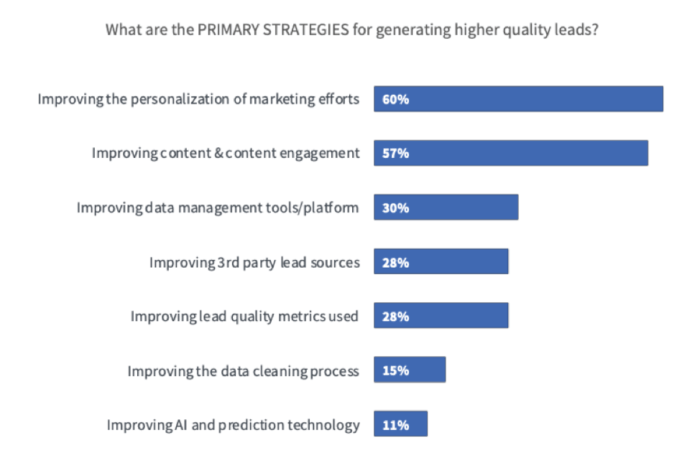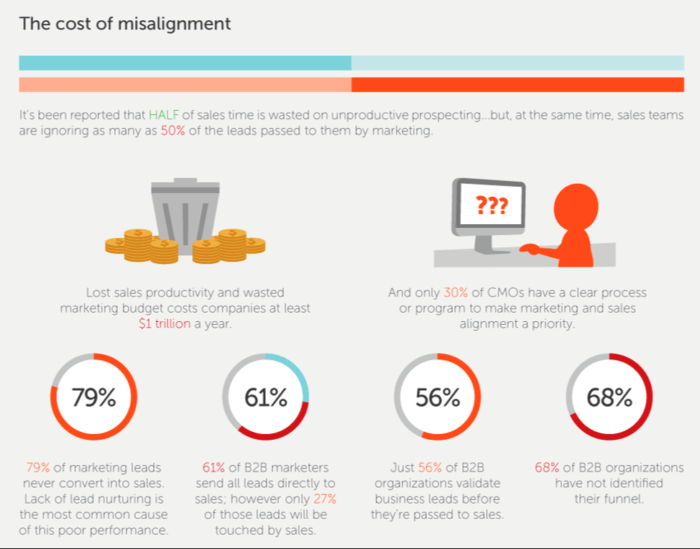ABM creates “markets of one” based on specific accounts, allowing you to make your marketing efforts highly specific and personal
The B2B sales cycle can be a long journey with many twists and turns in the road. For example, when you’re selling a complex service or piece of software that’s going to impact multiple processes within a business, you need to be patient and attentive in your lead nurturing process.
However, here I want to talk about one powerful approach to give your lead nurturing strategy extra fuel and encourage a faster conversion. This is focused on Account-based Marketing (ABM), an approach that has become increasingly popular within B2B organizations over recent years.
In his Smart Insights article, Adrian O’Gara defines ABM as: “a strategic approach that coordinates personalized sales and marketing efforts, to target specific accounts for new business and create deeper and broader relationships with existing customers.” Essentially, ABM creates “markets of one” based on specific accounts, allowing you to make your marketing efforts highly specific and personal.

In this article, I’ll take you through three key aspects of ABM that make for a quicker lead nurturing process:
- Personalization by using Ideal Customer Profiles (ICPs)
- Integration of sales and marketing processes
- Customization of content
Although ABM is often used by companies targeting high annual contract value (ACV) accounts, these principles can be adapted to suit various B2B models. It’s all about knowing your ideal customer better.
1. Personalization with Ideal Customer Profiles (ICPs)

A huge 60% of marketers say that personalization of marketing efforts is a primary strategy for generating higher quality leads. To achieve greater personalization, marketers often use the concept of buyer personas – fictional representations of a perfect customer, created using data and educated guesswork.
Well, ICPs take this idea to the next level and replace the guesswork with a scientific, iterative testing approach. You create ICP hypotheses based on your best existing customers and then you run experiments to validate these ICP hypotheses.
By identifying the common traits in your best current customers, you can go on to segment them and build a list of similar companies to target. The task is then to create a focused ABM campaign for each of these businesses, taking into account the key decision-makers and their pain points.
While you run the campaign, you’ll be collecting and measuring data to determine whether your ICP hypothesis was accurate, and once you have the final results these will inform your next steps.
So an ABM campaign that uses ICPs will naturally cut time from your lead nurturing process because you won’t be wasting time and resources focusing on buyer personas that don’t reflect reality. Instead, you’ll be creating intensely personalized campaigns for the most relevant target companies based on scientifically-tested ICP hypotheses.
2. Integration of sales and marketing
Lead nurturing becomes more time-consuming (and more expensive) when there is insufficient communication between the marketing and sales departments. In fact, it’s estimated that misalignment between these departments costs businesses more than $1 trillion per year.
ABM stands out as one of the rare approaches to address this issue. This is because it requires the formation of a specialized ABM team, which includes representatives from both marketing and sales.
Daley Robinson writes that ABM is “one of the few marketing approaches that see a true shared value (and as such shared responsibility) between sales and marketing.” His article has a useful list of the key players to feature in your team. The ABM team ensures that sales and marketing are on the same page when it comes to defining a lead and that they can collaborate on a streamlined lead nurturing process.
As a result, the sales department won’t have to spend time chasing inappropriate leads; instead, they will be passed those they already know have potential, as they meet the thoroughly tested ICP criteria.
3. Customization of content
As I discussed in the first section of this article, once you’ve used your ICPs to select the best target companies, you need to identify their key stakeholders. They will be the people who decide whether your product is the right fit for their business.
Producing content that addresses not only the collective concerns of the business but the particular needs of these decision-makers will enable you to hyper-customize your ABM strategy.
Download our Business Resource – Account-based marketing briefing
The guide gives members a comprehensive briefing revealing if it's the right approach for you as well as how to create an ABM strategy and implement ABM.
Access the Account-based marketing briefing
You can determine stakeholder pain points and priorities through qualitative research; you don’t necessarily need a huge volume of data to gain important insights. For example, you could find people in relevant roles on LinkedIn and interview them, or use an online research tool such as User Interviews.
Once you’ve created the content to match individual pain points, you need to get it seen by those key stakeholders. This isn’t just about automated email sequences, although these can play a role. Instead, lead scoring comes into play here, in order to dynamically customize the content a visitor sees on your website. Therefore, the leads in your system that score highly against your ICPs are shown content that is extremely specific to them.
You can also reduce friction in the lead nurturing process by using smart signup forms that change depending on what you already know about the lead. They’ll be more likely to sign up for your white paper or webinar if they don’t face a barrage of blank boxes on the landing page.
By using ABM to target these key individual stakeholders with super-relevant content, you will naturally speed up the lead nurturing process. Leads will be totally clear about your product, its use cases, and its payoffs in relation to their own pain points and their own concerns. The educational content is built precisely for their needs, and they’ll be closer to making a purchase decision as a result.
Key takeaways...
Despite the (oftentimes) convoluted nature of the B2B sales cycle, quicker lead nurturing is possible. With Account-based Marketing approaches, you can:
- Achieve unprecedented accuracy in your marketing strategy, using scientifically tested ICP hypotheses to identify the most valuable leads.
- Align your sales and marketing departments through the ABM team, creating a more streamlined lead nurturing process.
- Create and distribute precise and super-relevant content that addresses the pain points of key stakeholders, for optimized conversion.
While rushing your leads towards a sale is often counter-productive, a strong ABM strategy will remove time-consuming and unnecessary obstacles from the funnel for a smoother, faster customer journey.
Oren Greenberg is a growth marketer and the founder of the
Kurve consultancy in London. He helps startups and corporate innovation projects scale using digital channels. He has also written for leading marketing blogs and been featured in the international press.










